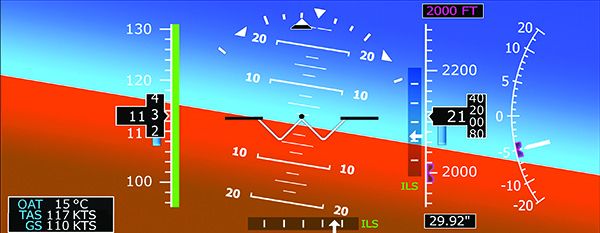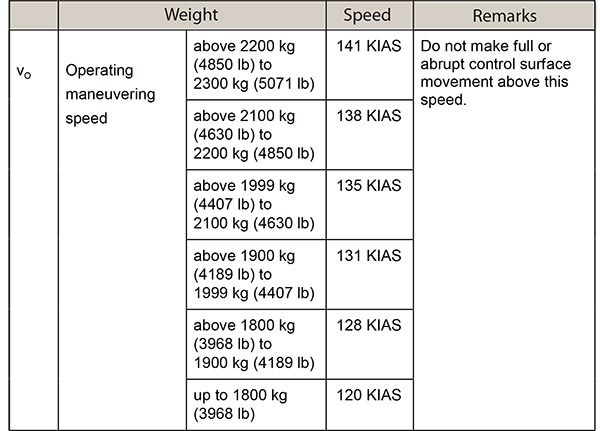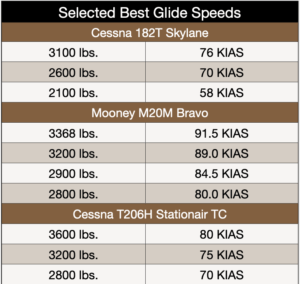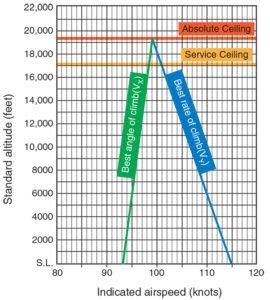
Aviation is a numbers-oriented activity. Sure; we can more or less safely operate an aircraft by disregarding some of them, but if we intend to aviate with some degree of reliability and repeatability—not to mention professionalism—we need to do it precisely, which means using some metric against which to measure our performance and the airplane’s. In the physical world we inhabit, that most often means using numbers.
The good news is we have many different ways of measuring aviation’s various parameters. Altitude, for example, or airspeed. Angle of attack. Not only does the aircraft’s performance depend on numbers, so does our degree of risk. How else can we gauge our progress toward our destination, how much fuel is required and whether we’ll have the weather to land when we get there without numbers?
Keeping track of all the numbers available to pilots can be overwhelming—that’s one reason multiperson flight crews were invented—but our potential for numeric overload can be minimized by focusing on just a few critical ones. What follows are the nine numbers I think are most important for us to know on every flight.
SPEEDS
A majority of the numbers we need to know involve airspeed. Thankfully, we have an indicator for that, which incorporates important numbers like never-exceed speed, when we can fully extend wing flaps and when we should expect the airplane to stall. Other important speeds/numbers likely reside in a placard on the instrument panel or sidewall to remind us, but not all of them.
The first number we need is liftoff speed, sometimes called rotation speed. (Large airplanes have a rotation speed, VR, but there’s often not one defined for small ones, so we call it liftoff speed.) This is the minimum speed at which we begin to exert back pressure on the pitch control to take off. This number often is published by the manufacturer as a weight- and conditions-dependent airspeed range rather than a single value. Regardless, it’s one we need to know to simply get off the ground.
Once we’re airborne, of course, we probably want to climb, for which we need a second number, also dictated by conditions. If we’re flying from a shorter field with obstacles, we likely want the airplane’s best angle of climb, VX, offering the greatest altitude gain over distance. Other times, we want to use the best rate of climb value, VY, giving us the greatest altitude gain over time. Frequently, we may want to use both numbers as we climb, but for our purposes, we’ll consider them the same.
As with other airspeeds we need to know, optimum climb speeds will vary with both weight and altitude. The sidebar on page 7 goes into greater detail.
Our third number likely is present on an instrument-panel placard as a maximum value—maneuvering speed, VA. The trick is VA actually is weight-dependent, and the placarded value often is for maximum gross weight. At the end of a long trip with few people and little baggage, for example, this number should be reduced from what the placard says. The sidebar at right has a useful rule of thumb.
The fourth number we need to know on each flight is specific to single-engine airplanes: the best engine-out glide speed. For many types, this will be a single value published by the manufacturer for a gross-weight airplane. Others may come with a narrow range of weight-dependent values to use when the engine quits. The FAA’s Safety Briefing topic, “Best Glide Speed and Distance,” explores how best glide changes with weight. See the sidebar on page 6 for more.

We were trained that maneuvering speed (VA) is the speed above which full or abrupt control movements must not be made. Later, we learned we also shouldn’t fly in turbulence above this value. But we’re often not trained to reduce VA at lighter weights, although we should.
Recent AFMs/POHs and those for newer airplanes often include more than one maneuvering speed, for heavy, medium and light weights, perhaps labeling them “operating maneuvering speed,” or VO, as shown in the excerpt above, adapted from the Diamond Aircraft DA 62’s AFM. For those of us flying airplanes without such detail in their documentation, computing your weight-adjusted VA/VO is easy enough to do in your head using a rule of thumb. You simply need to know two values: the airplane’s maximum gross weight and its current weight.
The rule of thumb is for every two percent reduction in weight from max gross, reduce VA by one percent. As an example, presume an airplane with a 3600-lb maximum gross weight and a 110-knot maneuvering speed is being flown at 3000 lbs. That’s roughly 83 percent of its gross weight, for a 17-percent reduction from maximum. Half of 17 is 8.5. Reduce the 110-knot value by 8.5 percent, which gives us a rounded, new weight-adjusted maneuvering speed of 101 knots.
If doing math in your head isn’t your thing, you can make up a table with various weights and the appropriate speed, then tape it to the instrument panel, or include it in your electronic flight bag’s documents. In any event, remember that VA/VO is the maximum speed we should be flying in turbulence; this is one of those occasions when slower is better.
WEIGHT
As the foregoing discussion details, many airspeeds we use on a daily basis are weight-dependent, and our airplane’s documentation may include only one value, valid at maximum gross weight. Of course, we’re never at max gross after taking off. The difference may be minimal and of no consequence on initial climb, but three or four hours later it can have greater impact. So it’s important to know the airplane’s weight, our fifth number.
Typically, when we discuss weight, we also talk about balance—where the center of all that weight is located on the airplane’s longitudinal axis. We call that the center of gravity, of course, or CG. That’s an important pre-flight number to know, but has less utility as the flight progresses when considering our nine numbers. That said, it’s important to know two things about the weight’s location: where it is at takeoff relative to the allowable range, and where it will move as fuel is burned. The center of gravity of some airplanes (cough, Bonanzas, cough) will move aft as fuel is burned; with other airplanes, it may not move appreciably at all, or will move forward.
Any CG shift with fuel burn has implications for stalling speeds but primarily affects pitch stability. Aboard an aforementioned Bonanza, the rearward shift as fuel burns moves the CG closer to the center of lift, one effect of which is to reduce pitch stability, and an input we make to the pitch control near the end of the flight will have greater effect than when we took off. If you regularly fly an airplane whose CG shifts appreciably as fuel is burned, it’s less important to know the specific CG value than it is to know the airplane’s handling will change when you punch off the autopilot after five hours of cruise flight. That said, your pre-flight planning should include a weight and balance calculation that considers the airplane’s state at the destination, when you’ve burned off all that fuel. It’s not unheard of for it to be outside the allowed envelope.
Of course, we know—or at least should know—the airplane’s weight at takeoff. Unless we’re throwing Momma from the plane, flying jumpers for a drop zone or dropping fire retardant, the only way for the airplane’s weight to change during flight is by burning fuel. If we’re burning 10 gallons an hour, for example, the airplane becomes lighter by one pound every minute and after a four-hour flight, the airplane weighs 240 pounds less. The impact of this weight change, absent any CG shift, can materially change the other numbers we need to know.
Considering the magnitude of the weight change is relatively easy. If we’re burning 10 gph and the airplane weighed 2400 pounds at takeoff, it now weighs 10 percent less. The speeds you use for optimum performance should be adjusted accordingly.

When your single’s engine quits, you’re flying a glider. Among other tasks, you need to fly the airplane. But at what speed? Manufacturers give you a target number to use—the airplane’s best glide speed. The bad news is that a single number doesn’t tell the full tale because it’s usually published for maximum gross weight and should be revised downward at lighter weights.
The table at right presents the published weight-adjusted values for three popular singles. Notably, it’s a relatively recent trend for AFM/POH data to include such a range. For example, the POH for a 1977 Cessna 182Q Skylane contains a single number: 70 KIAS, at the airplane’s 2950-lb. gross weight.
The FAA’s Safety Briefing topic, “Best Glide Speed and Distance,” says the number will be “roughly halfway between VX (best angle of climb speed) and VY (best rate of climb speed).” The publication highlights the difference between best glide speed—which offers the greatest distance over time, versus minimum sink speed, the speed resulting in the lowest descent rate. The publication recommends doing some in-flight testing to nail these speeds for the airplane you fly.
ENVIRONMENT
Weights and appropriate speeds are some of the basic numbers we should know at all times, but so is the ambient temperature and wind velocity, the sixth and seventh of our nine numbers. Why? Because even if slight variations in them may have no real impact, they have a material impact on performance (temperature) and planning (wind).
Every takeoff, landing or cruise performance chart we’re aware of considers temperature as a variable to be plugged into the calculations. For example, it’s not unheard of for the same airplane at the same weight to require half as much runway in the winter as it does in the summer. And if you’ve done any serious mountain flying, you know it’s always better to take off in the morning when it’s cooler than at midday.
Wind velocity—its speed and direction—also figures prominently in performance, as anyone who’s inadvertently taken off or landed downwind can attest. Even when we don’t make such a mistake, crosswind landings and takeoffs can be unforgiving in exacting their toll in bent sheet metal, ruined runway lights and flat-spotted tires. Both taken together also impact our cruise performance.
Of the two, temperature generally is more important when considering takeoff and landing performance while the wind at altitude can mean the difference between a non-stop flight or landing to take on more fuel. A cross-country flight I made years ago highlights this: The winds at altitude offered something like a 20-knot headwind while those at lower altitudes were light and variable. I flew the trip at 2500 feet msl, shaving an hour off the en route time needed at 11,000 feet.
TIME AND FUEL
Which brings us to our eighth and ninth numbers, time and fuel, which should be no-brainers: How long will it take to get to our destination? Do we have enough fuel to get there? The advent of GPS navigators and electronic flight bags makes the time question stone-age simple to answer, but that’s only half the game. We also need to know if we have enough fuel to get there. Relatedly, it’s nice to know we’ll arrive before the destination airport socks in, forcing us to divert, or the FBO closes. The accident summaries at the back of this magazine, meanwhile, rarely go a month without including an example of someone who ran out of fuel.
In fact, it may be easier for us to consider available fuel as time in the tanks. The need to know how much time we have available to remain aloft and how long it will take to get to our destination should be obvious, but it’s amazing how often someone forgets these basic numbers.

Putting aside the effects of weight on important airspeeds, we also need to understand how altitude impacts climb performance. Simply stated, best angle of climb (VX) increases slightly with altitude while best rate of climb (VY) decreases at a slightly higher rate. The graph at right shows the relationship, and that the two values are the same at the airplane’s absolute ceiling.
As we climb, there’s less air available to generate lift or make power. Since an airplane can climb only when available power exceeds what’s necessary to maintain altitude, the maximum climb angle occurs when the difference between power available and power required is the greatest. As power is reduced by altitude, maintaining VX places the airplane behind the power curve. To maintain the maximum angle of climb, we must lower the nose and accelerate. Meanwhile, when climbing at VY, best rate of climb, the less-dense air means less lift is being generated. To compensate and achieve maximum climb rates, we need to increase the angle of attack, which means flying more slowly.
This admittedly is something of a simplistic explanation; there’s more going on here—including propeller efficiency, induced and parasite drag and the relationship of true airspeed to indicated—than space allows. We’ll revisit this topic in an upcoming issue.
STRINGING IT ALL TOGETHER
The proper speed to fly, the airplane’s weight, the wind and temperature, and the time and fuel remaining are essential numbers we need to know during each flight. In fact, many of them are interrelated—the airplane’s weight can help determine what speed to fly and when, even if the extremes often are separated only by a knot or three. The time remaining in our tanks directly impacts where we can go and when we’ll arrive while also affecting weight.
Given the devil-may-care allure of kicking the tires and lighting the fires that afflicts many pilots at some point, we may not want to admit—to ourselves or anyone else—that there are limits on what we can do with an airplane or what the airplane can do for us. But flying is a numbers game, and we need to understand and respect how the value of certain parameters directly impacts performance and safety. And thanks to the aforementioned GPS navigator and electronic flight bag, which are capable of planning things down to the tenth of a gallon or pound, there’s no excuse for not being able to answer at any time questions like how fast I should be or how much this thing weighs.




Nice article. Another consideration for Single Engine aircraft Vg is what’s the prop doing? Is the prop still turning, stopped, OR (for constant speed props) is it pulled to orient the blades parallel to the relative wind) feathered? I learned from experience that a windmilling propeller is really just an inefficient speed brake. If the engine freezes the prop likewise freezes, and we get more glide distance. A few years ago I got to test this out when my engine seized in a 1985 C182R. My glide distance (airspeed adjusted for weight using the POH graphic) increased about 8-10%… a pleasant discovery when I later examined my flight profile from engine fail to wheels on the pavement of a major highway. Had the prop continued to turn, i.e. windmill, I would have feathered it. I speculate that the drag reduction might have had a similar effect on the engine out glide distance (again, adjusted for weight).
The best glide speed (Vg) should vary in the exact same manner as Va . They both vary as the square root of actual weight divided by the max weight (if that’s the number your POH gives you). This is so because best glide is predicated on maintaining the maximum Lift/Drag angle of attack (AOA). Maneuvering speed, Va, is predicated on the stall AOA (maximum AOA). Because our weight change in GA airplanes is a relatively small fraction of max gross weight, reducing speed 1% for every 2% of weight reduction is a reasonable approximation given that we actually have to fly the airplane. To make a glide speed chart more accurate, take the square root of the reduced weight (W2) divided by max gross (W1): Best glide speed equals Square Root (W2/W1) x V1 where V1 is the best glide at max gross weight. Measure it with a micrometer, mark it with grease pencil cut it with ax.
John T above makes an excellent point about drag reduction with the prop feathered or stopped vs. windmilling.
I have never in my life heard of “Lift Off Speed” is there a V speed representation? Can you give an example taken from an aircraft manual?
A second comment is about Va/Vo. A few years ago the FAA released an SAIB that cautioned pilots to limit full stop deflection of control surfaces to just ONE dimension (aileron, rudder, elevator) ONE time at or above Va. Not mentioned explicitly, but I’d interpret that to also mean the calculated Vo if below the GTOW Va found in most older POH. Some of us might recall the unfortunate airbus shortly after the 9/11/2001 terrorist attack on the NYC twin towers that snapped off its vertical fin on the tail when the co-pilot (PF) aggressively moved the rudder to full stop, then repeated the action in the other direction. I believe the SAIB was written to highlight that very real risk.